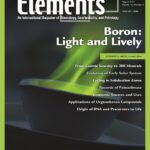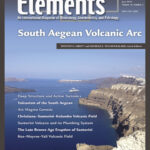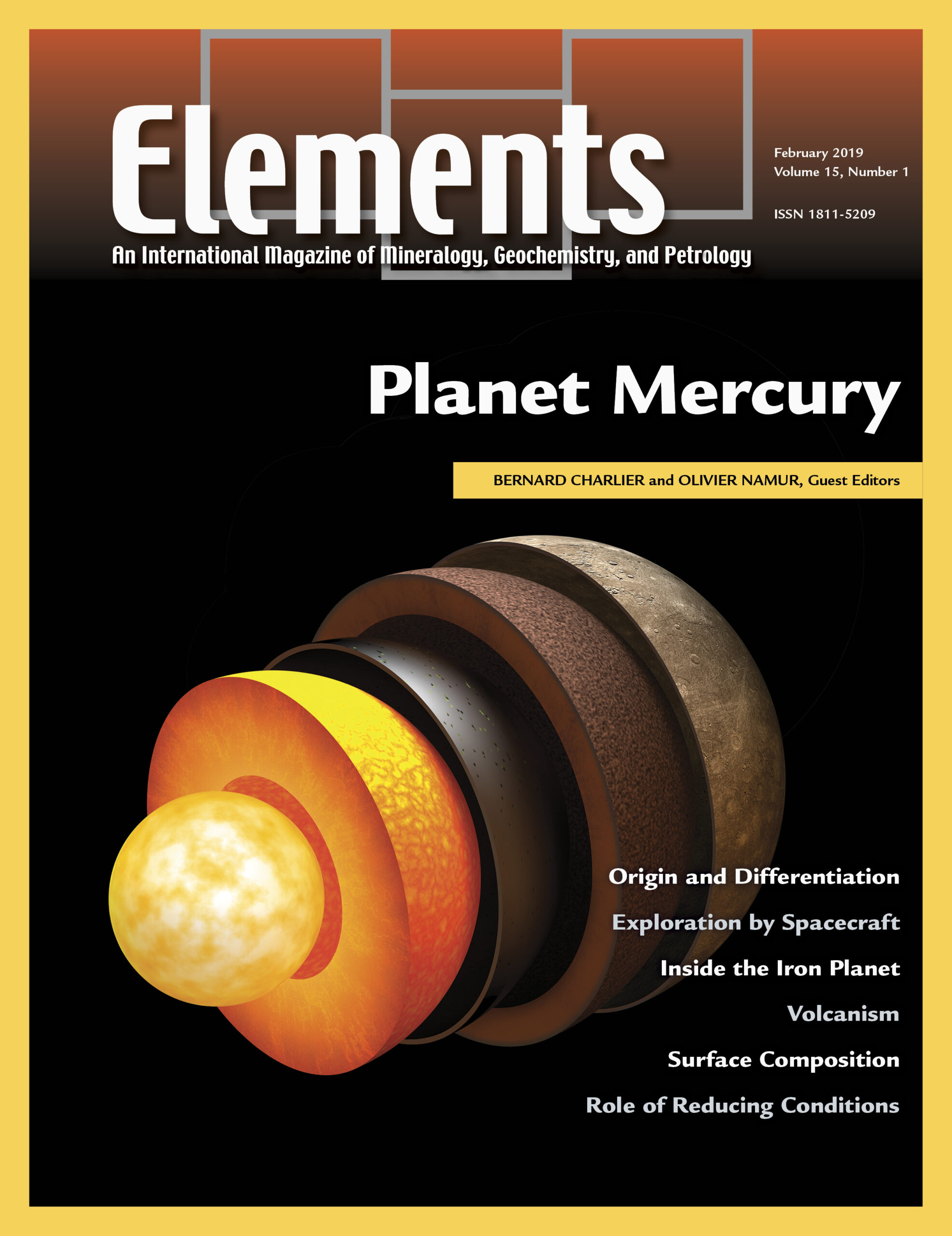
Boron: Light And Lively, August 2017, Vol. 13, No. 4
June 28, 2024
South Aegean Volcanic Arc, June 2019, Vol. 15, No. 3
June 28, 2024Planet Mercury, February 2019, Vol. 15, No. 1
$20.00
Mercury is unique amongst terrestrial planets because of its very high metal/ silicate ratio. The NASA MESSENGER mission ended in 2015 and significantly advanced our understanding of the deep structure of the planet as well as our comprehension of Mercury’s volcanic history and crust formation.
Planet Mercury
February 2019, Vol. 15, No. 1
Mercury is unique amongst terrestrial planets because of its very high metal/ silicate ratio. The NASA MESSENGER mission ended in 2015 and significantly advanced our understanding of the deep structure of the planet as well as our comprehension of Mercury’s volcanic history and crust formation. The European Space Agency (ESA) is now ready for the launch of the BepiColombo mission that will take place at the end of 2018. The “Planet Mercury” issue summarizes the latest developments in light of MESSENGER data and perspectives for the BepiColombo mission on internal structures and surface processes, based on insights from geophysics, geochemistry, igneous and experimental petrology and volcanology.
Why You’ll Love Elements Magazine:
- Expert Contributors: Articles written by renowned researchers in the field of geoscience.
- Engaging Content: Join a community of readers who are passionate about Elements.
- Exceptional Quality: Each issue is printed on high-quality paper with stunning visuals and detailed illustrations that bring complex scientific concepts to life.
Order your copy of the February 2019 issue of Elements magazine today and explore planet Mercury.
Related products
-
Frontiers In Textural And Microgeochemical Analysis, August 2007, Vol. 3, No. 4
$20.00Recent advances have been made in high-resolution in situ methods to image mineral growth patterns, analyse compositional and isotopic zonation, and improve our ability to visualize, study, and model rock textures in three dimensions. These advances provide a significant step forward in the understanding of how rocks form and the history they can tell us.
-
Medical Mineralogy And Geochemistry, December 2007, Vol. 3, No. 6
$20.00Medical mineralogy and geochemistry is an emergent, highly interdisciplinary field concerned with both normal and pathological interactions between minerals or amorphous inorganic solids and biomolecules or cells within the human body, and the transport and fate of prions and protein toxins in the soil environment. Prior research has, appropriately, focused on the complex genetic and molecular biological aspects, but there is a growing recognition of the vital need for understanding the surface and bulk properties and reactivities, especially at the challenging nanoscale characteristic of biomacromolecules and biominerals.
-
Arsenic, April 2006, Vol. 2, No. 2
$20.00Arsenic is an element known throughout history as a classic poison. Currently, very small but highly significant concentrations of this element in drinking water supplies are causing massive health problems to many millions of people in some of the world’s poorest nations, and more localised sources related to mining and processing are also a concern.




